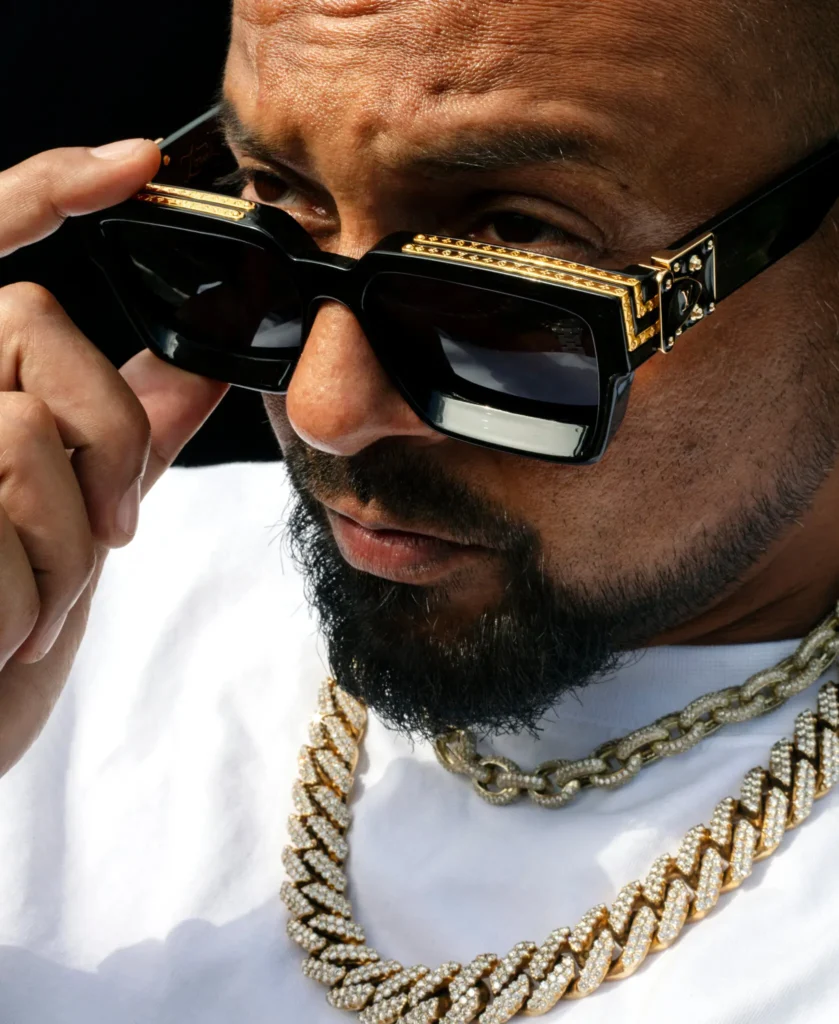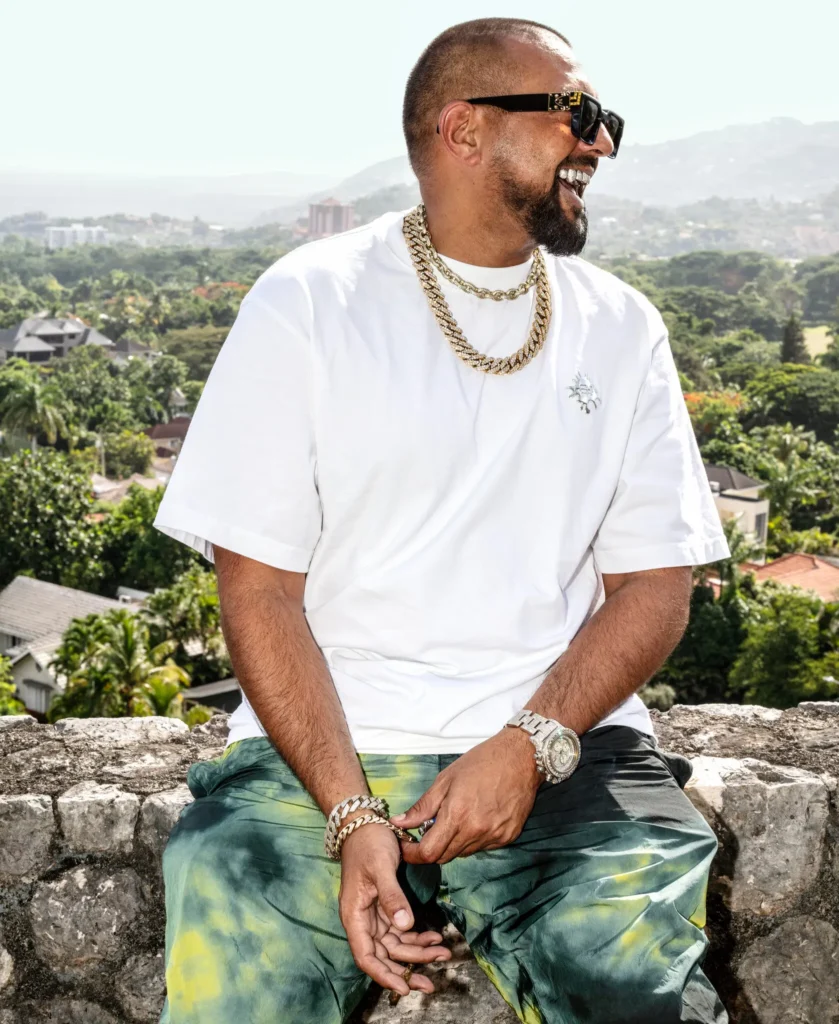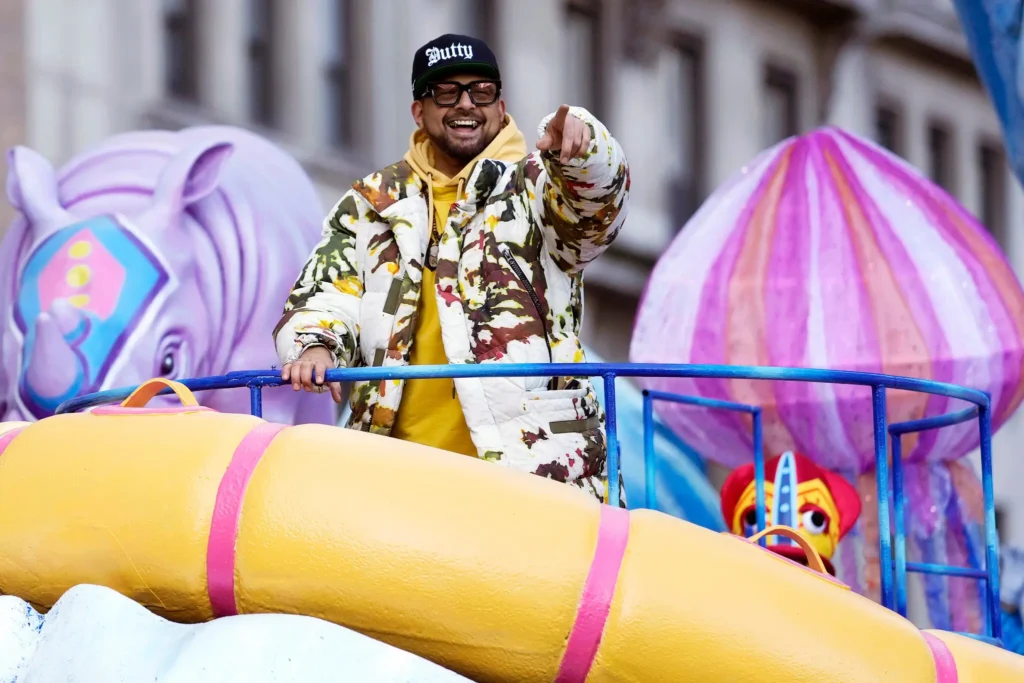The song is a giddy exaltation of oscillating hips in full swing, of beautiful backsides and the beautiful forms they belong to as they get jiggy, get crunked up, percolate. It is a knight’s declaration of courtly love to his five fair ladies: Jodi, Rebecca, Annabella, the Misses Donna and Cana. It is a lover’s sincere exhortation to his beloveds to shake that thing, made with a sly exuberance that is both worshipful and raunchy.
This is the seminal dancehall classic “Get Busy,” a 21-year-old party anthem that has been the source of dance-floor awakenings for generations of horny teenagers and young adults. And the knight paying homage to the things he is so respectfully asking the ladies to shake is Sean Paul, arguably Jamaica’s most famous musical export to the United States since Bob Marley. Two decades ago, after dethroning 50 Cent’s “In Da Club” from its No. 1 spot on Billboard’s Hot 100 chart, “Get Busy” did for Sean Paul what “Taxi Driver” did for Paul Schrader and “Liebesträume No. 3” did for Franz Liszt. This was the work that made an instant legend of its creator, who until then had been only a moderately successful purveyor of dancehall, Jamaica’s musical successor to reggae.
Young people today seem to be discovering Sean Paul with the same delight their elders once did in middle school. On TikTok, the barometer of all contemporary youth relevance, influencers like Charli D’Amelio and Addison Rae, who were un- or barely born in 2003, can be found participating in viral dance challenges to “Get Busy,” while millennial comedians 10 years their senior make videos about the unfairness of being in seventh grade when the song was ruling clubs. Like low-rise jeans, going-out tops and the “Fast & Furious” franchise, Sean Paul is one of those ubiquitous elements of Y2K-era American life that is experiencing a thundering resurgence.
I sat down with Paul on a salubrious June afternoon — “salubrious” was his choice of word — on Hellshire Beach near Kingston, where sargassum clogs the shoreline and clusters of shacks jostle for limited space on the ever-shrinking sands. At one of these establishments (either Screechy’s or Screechie’s, depending on whether you believe the indoor spelling or the outdoor one), covers were removed from platters of fried red snapper as Paul, wearing bright-orange cargo shorts and a T-shirt emblazoned with the word “DUTTY,” unrolled his smoking paraphernalia. He was by turns sprightly and pensive. The party-boy persona that once made him a megastar has evolved into that of a fun but responsible uncle — the one who still knows how to throw a party but will also ensure that everyone eats well and gets home safely afterward.
The night before, for instance, in the courtyard of a studio I was told had been built by Shaggy and his former manager, I watched some of Paul’s associates smoke from a many-feet-long chalice pipe as they waited to begin rehearsals for a coming tour. When Paul drove up, he announced that he had brought a case of mangoes from his own orchard, and I was treated to the wholesome tableau of a group of grown men tearing into a cardboard box, each extracting a mango and biting in with sighs and groans of unadulterated relish. The rehearsal featured breaks to crack open bottles of industrial-strength white rum — and loud shouts of laughter, including at my saying I shouldn’t drink while working and at my frozen expression when I did finally try a sip. This jovial gathering of dad bods, dad shorts and dad jokes more resembled the vibe of an after-school band rehearsal than a multiplatinum recording artist preparing to play a sold-out arena — perhaps because some of these guys really have known Paul since his earliest days in music.
As Paul explained to me at Screechy/ie’s, for his life to become what it is now — that of a Grammy-winning artist with YouTube views in the multiple billions and a catalog of beloved classics — a series of extremely fortunate events had to occur. And a fair number of them, he didn’t have much say in.
Long before he became the bandannaed and cornrowed Sean Paul who entranced the American public, Sean Paul Ryan Francis Henriques was just another young offshoot of Jamaica’s famous Henriques clan, one of the oldest Jewish families on the island, who immigrated there from Portugal in the 17th century. Paul, who has British and Chinese heritage on his mother’s side, actually grew up Catholic in solidly respectable Uptown Kingston, watching the raucous parties thrown at his grandmother’s home by an enterprising aunt who ran a sound system. Kingston is a city that takes parties seriously, and the sound system was a key 20th-century innovation — a portable setup of amplifiers, turntables and mountains of speakers, all orchestrated by a D.J. and an M.C., who truck the equipment to makeshift venues and use its booming sound to draw crowds. Paul and his younger brother, Jason, were both enamored of this family business; Jason actually recalls falling asleep in a bass box as a child. It was both brothers’ earliest immersion in music, listening to the Uptown crowds dance to Michael Jackson beats blended with the dancehall and reggae rhythms of Kingston.
Despite the legacy Paul was born into, his childhood was shaped by absences — like that of his father, Garth, who would disappear for months at a time, leaving his wife, Frances, hunting door to door, asking neighbors if they had seen him. He would materialize, months later, perhaps having whiled away the time in Mexico, once having crashed a Cherokee 6 plane stuffed full of marijuana in the Everglades. When Paul was 13, his father was convicted of manslaughter and sentenced to 15 years in prison. This devastated Paul — not because his father had been much of a presence in his life but because what little he had of him would now be gone. It felt, he says, like “that’s forever — Oh, I’ll never see this dude again.”
His mother sent him to Wolmer’s Boys’ School, among the oldest in Jamaica. Paul, who until then had been a bit of a dreamer, was thrust into a teenage milieu far removed from his former Jewish prep school; he began getting in fights with kids who teased him about his father being in prison. He was saved from a descent into hooliganism by swimming, a sport for which the Henriques family is well known. Both of Paul’s parents were champion swimmers, and he carried on that legacy, representing Jamaica at international competitions and as a water-polo player, his days beginning at 5:30 a.m. and spent training furiously.
Still, his grades weren’t good enough to get him into college, which was beyond his mother’s means anyway. He enrolled in a program for hotel management and learned the basics of French cuisine (yes, Sean Paul of “Temperature” fame knows how to make hollandaise); for a time he worked as a bank teller while making demo tapes in private. He would freestyle with a group called the Dutty Cup Crew, and there was a time when his father, newly released from prison, tried to introduce him to people in the music industry. But watching Sean — thoughtful, introspective Sean — pursue a career as an M.C. and dancehall toaster still seemed outlandish to those around him. He recalls a well-intentioned friend getting drunk at a party and crying while asking him why he was throwing his life away.
The real hitch in his early career wasn’t his demeanor; it was the subjects he wanted to write about. The young Sean Paul was intensely affected by the differences he saw in the quality of life between Uptown and Downtown Kingston. The early songs he wrote were of a subgenre classified as conscious reggae — socially minded stuff, meant to highlight the injustices he saw around him. He didn’t see any trouble with this until a producer took him aside and told him flat out: No one wanted to listen to conscious songs from a light-skinned Uptown kid. He might have had a father in prison for manslaughter and a mother who, he says, did tie-dye to support the family, and he might have grown up occasionally eating callaloo picked from the backyard, but on paper he was a posh boy with a surname and family legacy that made it impossible for him to be taken seriously while singing about wealth inequality.
In dancehall, masculinity is often a kind of balloon animal the M.C. inflates and twists into aggrandized shapes. In her book “Dancehall: Origins, History, Future,” the professor Donna P. Hope identifies the “six G’s” lyrics tend to dwell on (gun, gyal, ghetto, gays, ganja, God) and how each can be used to underline the vocalist’s machismo. The genre had made inroads into the U.S. market before — from Super Cat, Shabba Ranks, Beenie Man, Ini Kamoze — but if Paul would one day top them all, perhaps it’s because even at the peak of his party-boy persona, he understood that longing for things you cannot have is a universal sentiment. He has spent his entire career writing soft-focus love songs and ballads of unrequited yearning; they’re just disguised as songs to grind pelvises to. “Temperature” promises to “shelter you from the storm.” “Rockabye” is an earnest tribute to single mothers. On “Give It Up to Me,” he promises “love so clear/It gonna make you shine, and once you are mine/We be rockin it until the end of time.” These are club tracks, but if you, just hypothetically, happened to be listening to them on repeat during your fifth hour of silently hiccup-sobbing into a pillow (don’t ask), they would absolutely deliver in that arena as well.
“Baby Girl” was Paul’s first local radio hit, earning him some popularity in Jamaica and paving the way for his first U.S. studio album. But it was his sophomore LP, “Dutty Rock,” that made Sean Paul into the commercial leviathan he is today. In 2002, a brief New York Times article noted an interesting new record featuring 19 songs, by different artists, all built on the same bewitching “riddim,” a basic beat for dancehall artists to record over. Created by a producer named Steven (Lenky) Marsden, the Diwali riddim — named after the Hindu festival — was built on frenetic syncopated hand claps that escalate over an underlying boom. At the time, Marsden had no sense of the classic he had created. But if you were alive in the early 2000s, you simply could not escape the contagious sound of this percussive loop, which would bounce and undulate its way through the culture everywhere, from Lumidee’s charmingly off-key hit “Never Leave You (Uh Oooh, Uh Oooh)” to Wayne Wonder’s “No Letting Go.”
Marsden received a phone call from VP Records asking if he would lend the riddim to one of their buzzy new artists: Sean Paul. The result was “Get Busy,” a monstrous hit that transformed Paul’s career and helped sell nearly six million copies of “Dutty Rock.” Back in the clubs-cars-and-Cristal era of R.&B., the “Get Busy” music video was an anomaly, too, depicting a party that would be recognizable to suburban diasporas everywhere: adults gathered around a dining table, young people crowding the unfinished basement below, an angry Caribbean dad in a loud batik-print shirt yelling at the youths to “stop banging on the damn furnace.”
Paul is now closer to the age of that video dad than the basement party-starter he played. In the intervening years, he has remained booked and busy, ushering in a steady procession of hit songs, both his own and in collaborations with other pop stars. Whether you have recognized it or not, a new song of his has likely made its way to you in the past eight years — perhaps by way of “No Lie,” his collaboration with a sandpaper-voiced, prefame Dua Lipa; his work with the actor Idris Elba on the rambunctious “Boasty”; or his guest feature on Sia’s “Cheap Thrills,” which seemed to blare constantly from the stock-exchange-size H&M in Times Square in the summer of 2017. Paul may now be an elder statesman of dancehall, but he is still producing, recording and performing with vigor. As for the Jodi in “Get Busy,” she’s now his wife.
I am one of those millennials who discovered Sean Paul at age 12 — but I also grew up in a secluded, almost cultlike boarding school in India, where we were forbidden any sort of internet access and had little idea what was popular among people our age in the outside world. My only familiarity with reggae was by way of an English guy named Steven Kapur who grew dreadlocks, called himself Apache Indian and sang in a Punjabi-inflected patois about wanting an arranged marriage with a dainty Indian girl who would make him rotis. I did recognize the Diwali riddim, but only because the Lumidee hit based on it would play when Megan Fox’s character appeared onscreen in the Lindsay Lohan classic “Confessions of a Teenage Drama Queen.” Still: Somehow, by way of some entrepreneurial soul who knew how to burn pirated music onto CDs, “Get Busy” would play on repeat at my all-girls school’s gatherings with boys from a neighboring school, where chaperones were stationed at every corner to prevent anyone from getting even remotely busy.
Whether it’s at a grimy nightclub or in an auditorium full of emotionally stunted teenagers avoiding eye contact in Dehradun, India, there are a few things likely to occur whenever a D.J. puts on “Get Busy” for a crowd of the right age. There will be squeals of recognition as Paul booms “SHAKE … THAT … THING,” each word with its vertiginous pause. Then the delirious, almost incantatory hand claps will start to register: “It’s the ignition of those butterflies,” he told me. As Paul’s exuberant melodies combine with the boisterous throb of the Diwali riddim, listeners’ hips and waists acquire a sentience of their own, moving as if threatening to secede from the rest of the body.
This was true in 2003 — some 40-year-olds I asked wistfully confirmed this for me — and it remains true two decades later. I watched Paul live in concert, not once but twice, last year in New York. He was a consummate showman, with unflagging reserves of energy, leaping around in front of the giant Jamaican flag draped over the D.J. console overseen by his brother. Paul seemed to know exactly who his audience was, and to this audience he gave exactly what we wanted: his biggest hits, opening immediately with the iconic intro of “Get Busy,” to which we all lost our minds. On both occasions, I witnessed elder millennials try hip movements far beyond our joints’ collagen levels. Each time I felt as though I had been factory reset as a person.
The members of Paul’s preteen fandom — whether that means me in 2003 or the kids browsing TikTok a year ago — might not have had any frame of reference for the parties and spliffs that he was singing about, the Jamaican patois he was singing in or his place in the lineage of dancehall. But a thumping party track is a thumping party track, and not knowing the lyrics would not stop any of us from, as one recent video elegantly put it, “throwing ass” to his bangers, then or now. For decades, Paul has offered the service so much great pop does: distilling a mythical idea of the perfect party, the always-pumping club, and delivering it into the minds and ears of people who will not learn for years that real clubgoing tends to be much more tedious and involve uncomfortable shoes. For someone like me — someone who, until I moved away from home, wasn’t even allowed to go to parties, let alone parties with sexually suggestive dancing — Paul’s songs were about the poetry and promise of dark, sweaty basements and libidinous gyrations. Neither was part of my life at 12, and neither are part of it as a not-so-young-anymore adult with an office job. But Paul’s best songs take all your amorphous longings and feelings of exile — whether imposed by a pandemic or a boarding school or a lost youth — and exorcise them.
I can’t wait for the weekend, I can’t want to see that girl again: That, Paul told me in Kingston, is the type of anticipation he puts into his songs. Because if there is one thing he has understood since he was 14, it is the stultifying restlessness that lurks beneath the lives of suburban teenagers. Today he considers it his artistic purpose to exalt uncomplicated ease and pleasure. His legacy is the pure euphoria that erupts on faces when he performs “Get Busy.” The fact that he has been doing this for more than 20 years struck him, recently, when he realized that the nieces and nephews who were infants when the song took off are now old enough to drink and party and experience their uncle’s concerts. “And then they start going to the shows,” he giggled, “and they’re like, Yo?!” At 22, he said, he had wanted to sing about social evils. At 50, he has found peace simply taking people’s minds off them.
Source: The New York Times







